Categories: Electrical Reviews
Number of views: 3807
Comments on the article: 1
Varieties of popular Peltier modules
On the sites of modern online stores you can find a variety of Peltier thermoelectric modules. They differ from each other in temperature characteristics, electrical parameters, size, as well as the number of thermocouples installed inside the module. These modules are used both in portable refrigerators and air conditioners, as well as in amateur crafts.
It is worth noting that Peltier modules are single-layer and multi-layer, so that the installation issue is solved quite freely. In the framework of this article, we will consider several types of the most common Peltier thermoelectric modules, we will understand their structure and compare the parameters.
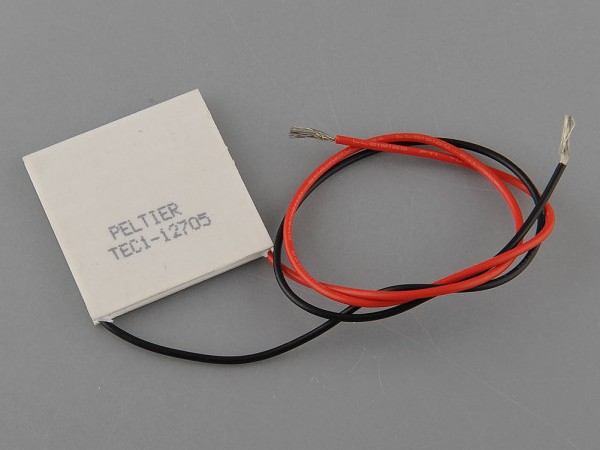
Here is a typical single-layer Peltier thermoelectric module. Two ceramic plates (aluminum oxide) with a thickness of less than 1 mm are installed in the upper and lower parts of the module. They, like a printed circuit board, serve as a support for internal thermocouples and a frame for the entire module.
Ceramic plates have high thermal conductivity, are durable and fire resistant. Copper substrates are glued to these plates, to which semiconductor thermocouples are connected in series.
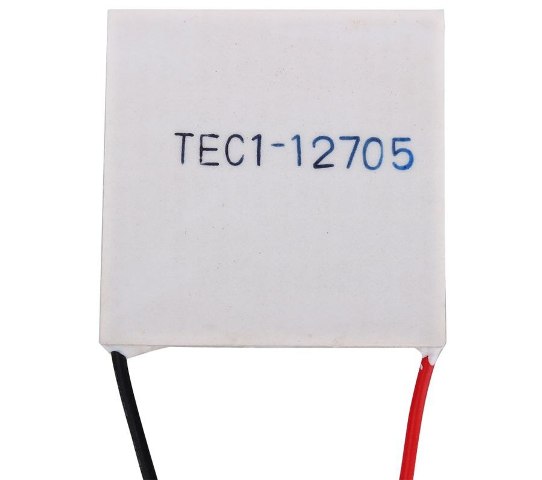
The soldering of semiconductor thermocouples in the industrial production of Peltier modules is carried out by fusible solder on special equipment at a temperature of about 145 ºC, since semiconductor elements do not allow overheating. As a result, the modules are non-separable, and silicone sealant is usually applied at the edges.
If, for the sake of curiosity, for the sake of reason, such a module can be disassembled, then you can clearly see the cubes of heterogeneous semiconductors (n-type and p-type), soldered to copper substrates, and connected to each other in a serial circuit by a snake. It is easy to notice that at first low-melting solder was applied to the copper substrates, and then the thermocouple components were installed.
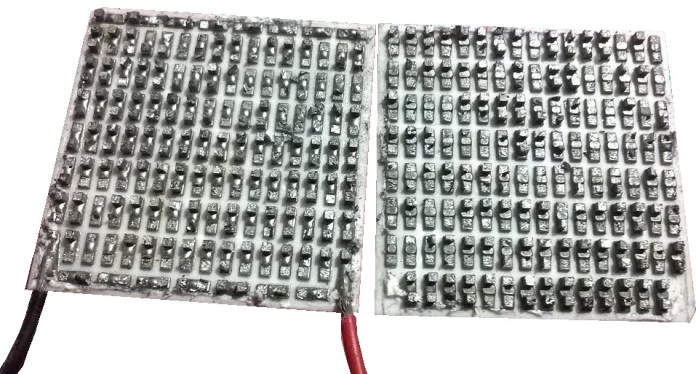
In this design, as shown in the photo, 127 p-n and 127 n-p junctions are obtained, all n-p junctions (to direct the current from plus to minus) are located on one side of the module, and all p-n junctions are on the other side.
On those copper buses where the current goes in the direction of the n-p junction, the heat is absorbed (intensive cooling of this side of the module occurs), and where the current goes in the direction of the p-junction, the same (theoretically) heat is released. Thus, the Peltier module transfers heat from one ceramic plate to the opposite.
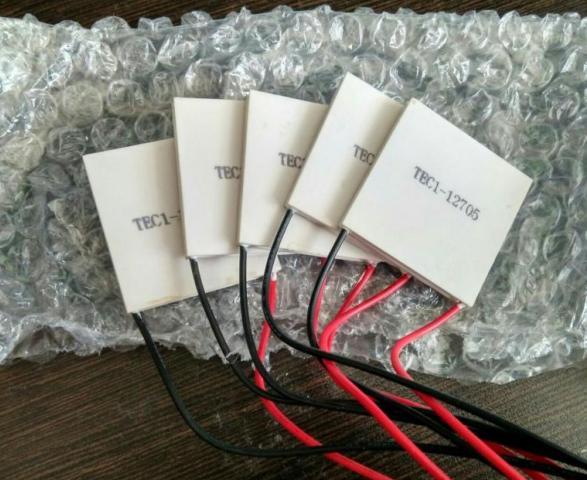
The most popular single-layer module TEC1-12705, costing about $ 2, is in special demand for aliexpress. Overall dimensions of the module 40 by 40 mm, thickness 3.8 mm. 127 thermocouples connected in series give an internal resistance of the module from 2.5 to 2.8 Ohms at an ambient temperature of 25ºC.
The operating current of the device is from 4.3 to 4.6 A when powered by a nominal voltage of 12 volts. The maximum allowable voltage is 15.4 volts at a critical current of 5.8 A. The maximum achievable temperature difference is 65 ºC, and the maximum refrigerating power is 42 W. The operating temperature range of the module is from -55 to 83 ºC.
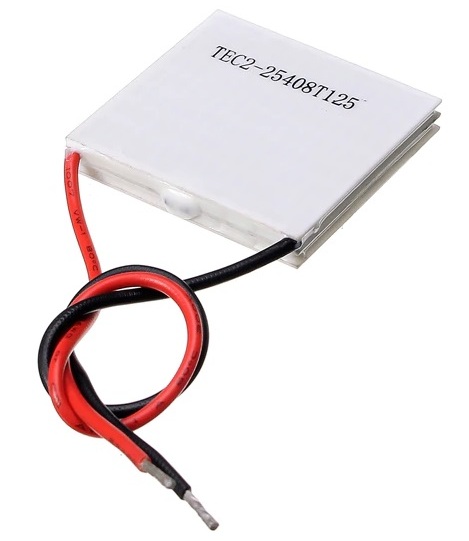
And here is the two-layer TEC2-25408 module, consisting essentially of two TEC1-12704 modules connected in parallel, but having dimensions of 40 by 40 mm and a thickness of 8 mm. Such a two-layer cooler is capable of producing up to 70 watts of cooling power while consuming 96 watts of electric power.
Its internal resistance when turned off is approximately 1.5 ohms. The maximum achievable temperature difference during operation is 65 ºC. Obviously, with the same extreme temperature difference with the TEC1-12705 module, the two-layer TEC2-25408 module will cool (pump heat) one and a half times faster.
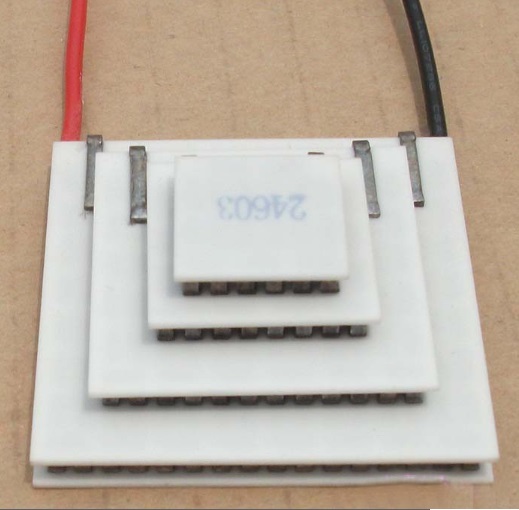
The following is a four-layer TEC4-24603 module with a thickness of 13.6 mm and a width of 40 mm, designed for a voltage of 14.6 volts and a rated current of 3 A. With a consumed electric power of 44 W, this module is able to provide cooling power of 6.8 W and temperature difference up to 107 ºC.
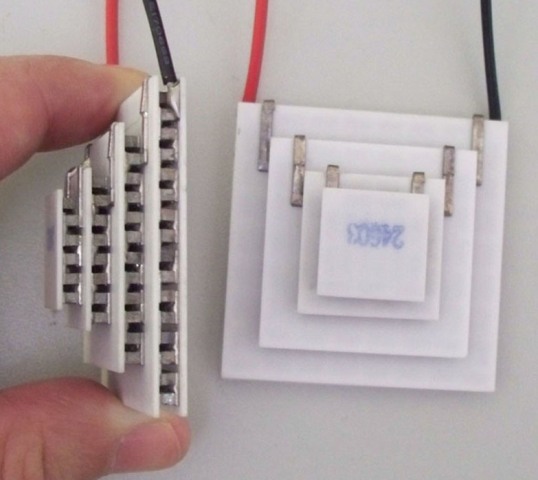
The constituent elements are included here sequentially. Like any Peltier module, this four-layer model does not allow use without a radiator for more than a second.
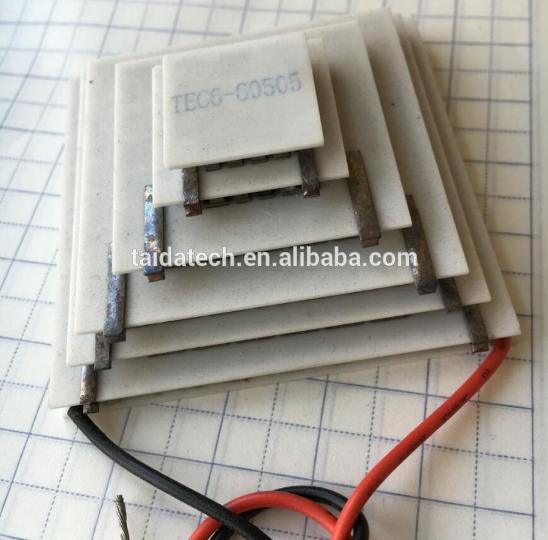
Finally, the six-layer Peltier module TEC6-60506, designed for a nominal voltage of 30 volts and a current of 6 A. With a width of 62 mm and a thickness of 23 mm, this module with an electrical power of 180 W can provide a temperature difference of up to 100 ° C with a cooling capacity of 10 W . A module of this type is applicable in installations intended for deep freezing.
See also:Thermogenerators: how to “weld” electricity on a gas stove andPeltier effect: the magic effect of electric current
See also at e.imadeself.com
:
